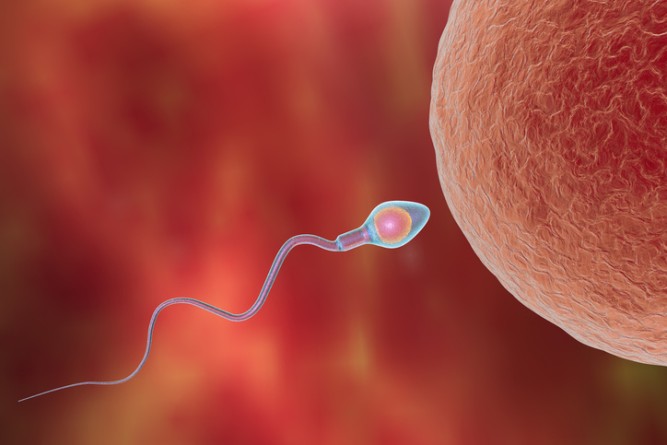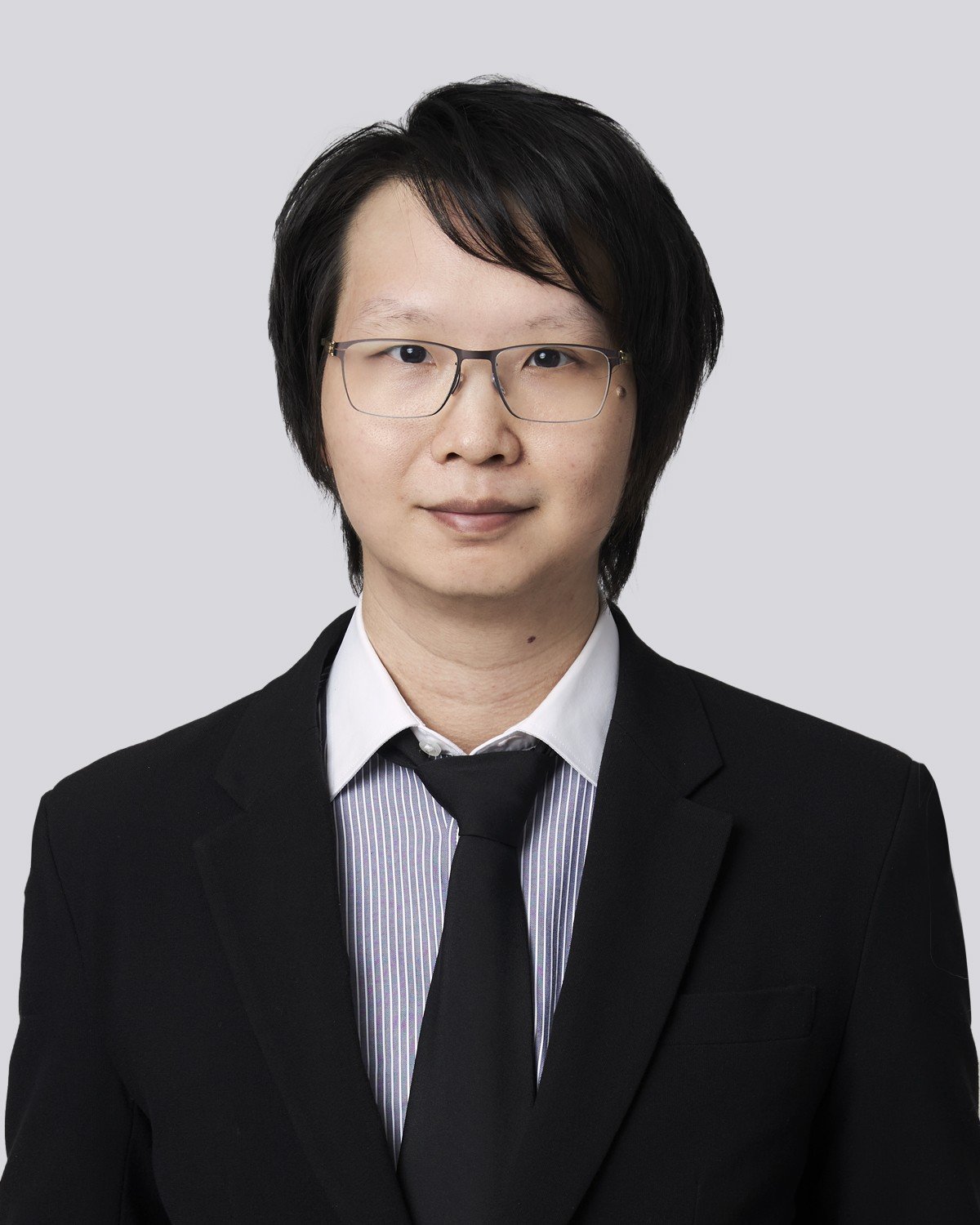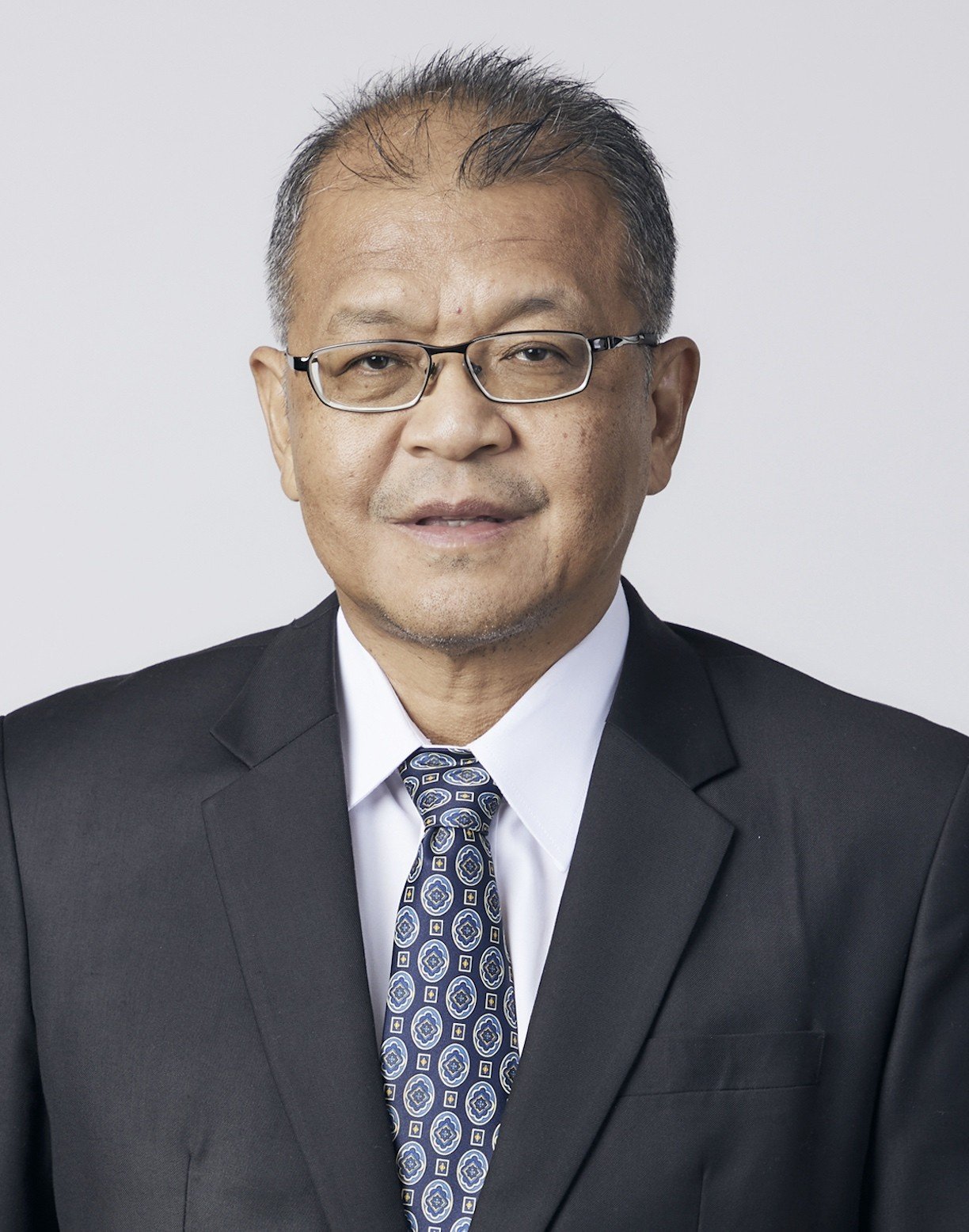Giving birth to patents in IVG
29 April 2023

Giving birth to patents in IVG
In-vitro gametogenesis might be replacing the standard practice of in-vitro fertilization, but it’s still in the process of legalization in many jurisdictions due to existing patent legislation. Excel V. Dyquiangco discusses how it’s a game changer for future parents and how the current barriers may soon come down as the law evolves.
Intellectual property hasn’t been a significant factor in the expansion of assisted reproductive technology over the previous 50 years, but it might soon play an important role with in-vitro gametogenesis (IVG). IVG is the synthesis of eggs and sperm from undifferentiated human cells, and is anticipated to become the standard method of reproduction in the future.
An expert claims that IVG would one day cause a significant share of human pregnancies, possibly even 90 percent in the United States. Whatever the outcome of this prediction, IVG will likely have a significant impact upon how people reproduce. With IVG, infertile couples may be able to conceive, same-sex couples may have genetically-related children, parents may select from many genetically distinct embryos and germline genetic alteration may be reasonably safe.
In addition, some assisted reproduction experts also expect that IVG will replace practically all conventional in-vitro fertilization (IVF) operations for those suffering problems with fertility.
Now the bigger questions remain: Can procedures like IVG even be patented? What risks or challenges could ensue if IVG supplants conventional IVF?

Nicholas Tyacke, partner, DLA Piper, Sydney
According to Nicholas Tyacke, a partner at DLA Piper in Sydney, the method of reprograming human cells to a pluripotent state and the method of producing eggs or sperm from those induced pluripotent stem cells is likely patentable in Australia. However, following those steps, it is unlikely that the method of fertilization of the egg or implantation of the embryo will be patentable in Australia.
“This is because, under Section 18(2) of the Australian Patents Act 1990, human beings and the biological processes for their generation are not patentable inventions. This is currently interpreted by the Australian Patent Office as excluding from patentability human embryos and processes for generating or culturing human embryos,” he explained.
Both patentable in Australia and New Zealand?
In agreement with Tyacke’s statement, Jason Rogers, a partner at James & Wells in Auckland, said that while IVG technology is patentable in Australia and New Zealand, it may be difficult for the other steps where human embryos are directly involved. In addition, IVG might give one pause on the surface when considering patentability under the Australian Patents Act 1990 and the New Zealand Patents Act 2013, which both include specific exclusions to the patentability of human beings and biological processes for their generation.

Jason Rogers, partner, James & Wells, Auckland
However, there may be many potential ways in obtaining patent protection for IVG technology concerning humans in Australia and New Zealand. According to Rogers, there are three significant differences between the patentable subject matter in the two countries.
Firstly, medical treatment methods for humans are patentable in Australia, whereas they are not in New Zealand. Secondly, under the New Zealand Patents Act 2013, inventions contrary to public order or morality are excluded from patentability, whereas the Australian Patents Act 1990 specifies no such exclusion. Thirdly, the Australian Patents Act excludes inventions contrary to law.
Consequently, despite the “great therapeutic promise” of IVG, medical treatments for humans using an IVG-based procedure can only be patented in Australia and not in New Zealand, said Rogers. Nonetheless, medical treatment methods of animals other than humans are allowable under the New Zealand Patents Act 2013. As IVG technology has only been successful in mice, one way to patent this procedure is to direct the claims toward animals other than humans.
“We believe that there is plenty of patentable subject matter available in both Australia and New Zealand currently,” he said. “Noting the current limitations, the law is still evolving in this area so yet more opportunities to protect this very promising field of technology, which addresses infertility or obstacles to natural ‘biological ways’ for humans to have children should be explored. Any evolution of the current laws related to IVG will no doubt be at pains to preserve what it means to be human.”
He added: “With IVG’s potential of generating a viable gamete from the somatic cell of an infertile parent, the overall benefit to humanity will likely be a lightning rod in terms of what is patentable and what is legal.”
Since this is a new field of technology, the laws on what is and is not patentable may be subject to change.
“Thus, the above examples are illustrative only and are not in the nature of a legal opinion as patentability often depends on the facts of each case, the supporting data at hand, laws currently in existence and interpretation of the same,” said Rogers. “Furthermore, it is noteworthy that the potential for this new technology and its potential benefits to society may well see laws change over the pendency of any patent application filed. Thus, if a technology is important to your client related to an IVG technology, a patent application should be considered.”
Challenges in Thailand
In Thailand, the current provisions of the Thai Patent Act 1979 (B.E. 2522) do not discriminate against an invention’s patentability by its field of technology. Regardless, the prosecution of Thai patent applications for IVG technology is likely to encounter challenges, which have been present for previous applications in the medical and biotechnology fields, according to San Chaithiraphant, a senior associate at Tilleke & Gibbins in Bangkok.

San Chaithiraphant, senior associate, Tilleke & Gibbins, Bangkok
“The Thai Patent Office’s Examiner is likely to raise that challenge by way of an office action,” he said. The legal provisions upon which the office action may be based are as follows:
- The first notable provision is Section 9(1), barring the patentability of microorganisms that are available in nature and plants, animals or their extracts. Patent applications claiming the products of IVG (egg cells or sperm) may be challenged by this statutory bar. Although it is still arguable that gametes produced from IVG may not fall within the meaning of “extracts” from an animal, the examiner tends to raise an office action to challenge a patent application of this kind.
- The second provision is Section 9(4), barring the patentability of methods of diagnosis, treatment or cure of human and animal diseases. Patent applications claiming IVG to cure human infertility (assuming that infertility is considered a disease) may be challenged by this statutory bar.
- The third provision is Section 9(5), barring the patentability of any invention that is contrary to morality, public order, public safety and health. The interpretation of this statutory bar depends on the social and/or legal landscape at the time. The Examiner may argue that IVG technology is contrary to the public order because it facilitates embryo farming for commercial, non-consensual use of human biological materials and gene modification in embryos.
- The last provision is Section 5(3), which imposes the requirement of industrial applicability. The official Patent Examination Handbook 2019 states that a method of artificial fertilization lacks industrial applicability and, thus, would not be deemed patentable. Nonetheless, the Handbook only informs the general practice of the Thai Patent Office and does not constitute a body of binding law.
“Take note that these are directed to the challenges that may arise in the prosecution of a patent application for IVG technology,” said Chaithiraphant. “The prospect of overcoming those challenges must be determined on a case-by-case basis.”

Adirek Siriwattasit, consultant, Tilleke & Gibbins, Bangkok
Adirek Siriwattasit, a consultant at the same firm, added that Thailand heavily regulates the use of assisted reproductive technologies (ART) through the Protection of a Child Born by Medically Assisted Reproductive Technology Act 2015 (B.E. 2558) or the ART Act. Enacted in 2015, the legal definition of ART may not cover IVG technology.
“As such, if IVG supplants conventional IVF, the Thai Parliament is likely to amend this legal definition to maintain the act’s relevance,” he said. “Assuming that the amendment is made only to extend the legal definition of ART to IVG, and the rest of the current ART Act remains in force, the act may limit the access of IVG technology to legally married heterosexual parents only.”
Patents making claims
In the fate of patents making claims when the proof of principle – the birth of a child from in-vitro gametogenesis – has not yet been achieved, Siriwattasit said that Thailand has no explicit rule to determine the level of proof-of-principle’s bearing on patentability.
“Notwithstanding the absence of said rule, Section 17(3) of the Thai Patent Act provides that the patent specification must contain clear and sufficient details, which may be followed by an ordinarily skilled person to perform the invention,” he said. “Furthermore, Clause 4 of the Ministerial Regulations No. 21 1999 (B.E. 2542), promulgated under the Thai Patent Act, states that a patent claim must also correspond to the specification.”
He further said: “Against these requirements, the applicant must include experimental results in the patent specification, and the patent claim must not go beyond the support of experimental results. In our experience, the Examiner may request further experimental results if they find the data as disclosed in the specification insufficient. The extent of proof established by the data is a basis for the extent of patent claim allowance. For example, the data showing success in reproducing an effect X in mice may be considered inadequate to support the claim, directed to a product for replicating an effect X in human subjects.”

Wongrat Ratanaprayul, director, Tilleke & Gibbins, Jakarta
Wongrat Ratanaprayul, a director at Tilleke & Gibbins in Jakarta, said that in terms of patenting the invention, it would require providing enough information so that a person skilled in the art could replicate the same procedure to achieve the same result. Therefore, it is not required to prove the principle of the invention.
“In other words, the patent examiner will not conduct an experiment to see if what is claimed in the patent is functional or not,” she explained. “However, to provide evidence that the claims are valid, normally the patent applicant would have to show experimental data to demonstrate what has been claimed. Patents making claims when the proof of principle has not yet been achieved could mean that the proposed innovation is not useful and should not be patentable.”
IP’s exclusive rights, pricing and controversies
In granting an IVG patent that may obstruct the foundational research conducted by academic laboratories, Jakkrit Kuanpoth, of counsel at Tilleke & Gibbins in Bangkok, said that a patent’s exclusive rights prevent a non-patentee from producing the claimed product or practicing the claimed method. However, academic research is exempted from patent infringement under Section 36(1) of the Thai Patent Act. Nevertheless, such research must not cause undue prejudice against the patentee’s legitimate interests.

Jakkrit Kuanpoth, of counsel, Tilleke & Gibbins, Bangkok
According to Kuanpoth, purely academic research for curiosity, the pursuit of knowledge or scientific progress “clearly falls within the safe harbour” provided by the aforementioned exemption. However, research conducted by for-profit entities or with a commercial purpose is more “nuanced”, and its eligibility for safe harbor must be determined on a case-by-case basis.
“On the subject of pricing, a strong patent usually entitles the patentee to broad market exclusivity,” he said. “In such cases, the patent should allow the patentee to set a higher price for the commercialization of their technology. To what extent the price may be raised depends on many more factors, including the patentee’s business objectives, the state of competing technologies and price control regulations (which are governed by a different law).”

Nattriya Supmoon, patent agent and head of technical translation, Tilleke & Gibbins, Bangkok
Nattriya Supmoon, a patent agent and head of technical translation at Tilleke & Gibbins in Bangkok, said that it is very likely that the potential of IVG technology will ignite controversy among the Thai public and opinion leaders.
“Such controversy would usually result in the enactment of regulation, whether in the form of a new regulation or an amendment to the existing one,” she said. “The stringency of the regulation may further influence arguments under Section 9(5) of the Thai Patent Act, pertaining to public order. For example, an invention of which marketing is banned by another law of Thailand, such as a narcotic formulation, could be excluded from patentability based on Section 9(5).”
The future of assisted reproductive technology
Countries in Asia are predicted to suffer from a shrinking and aging population. According to the latest report by the Credit Suisse Research Institute, The Global Effects of Asia’s Aging Population, the median age across Japan, China and Thailand rose from 30 to 40 in just 22 to 24 years. Assisted reproductive technology could offer a solution to this problem.

Napas Limpunyalert, associate, Tilleke & Gibbins, Bangkok
“On the other hand, ART has historically involved ethical or social concerns and caused great controversy,” said Napas Limpunyalert, an associate at Tilleke & Gibbins in Bangkok. “In the regulators’ likely perspective, IVG’s greater versatility comes with more possibilities of misuse. Therefore, its regulation requires careful design. Moreover, IVG carries the potential to remove human reproduction further from heterosexuality; this fact may include members of the LGBTQ+ community in the pool of stakeholders. As such, the dialogue regarding IVG technology could extend to other social issues, such as same-sex marriage and parental rights.”
She continued: “For these reasons, the legal and social recognition of IVG in Thailand is expected to mature steadily and slowly. As a point of reference, Thailand took several decades before IVF technology was legally accepted, albeit with many restrictions as set out in the ART Act. We believe that the emergence of IVG technology is likely to follow a similar course, though the dialogue may progress faster due to rapid advances in information technology, which were unavailable decades ago.”
Ratanaprayul added that since IVF is available in Indonesia, IVG may become available if the technique is developed for humans in the future. “Even though this technology might not be patentable, there are probably parents who would want to use IVG as their reproductive technology of choice,” she said.






